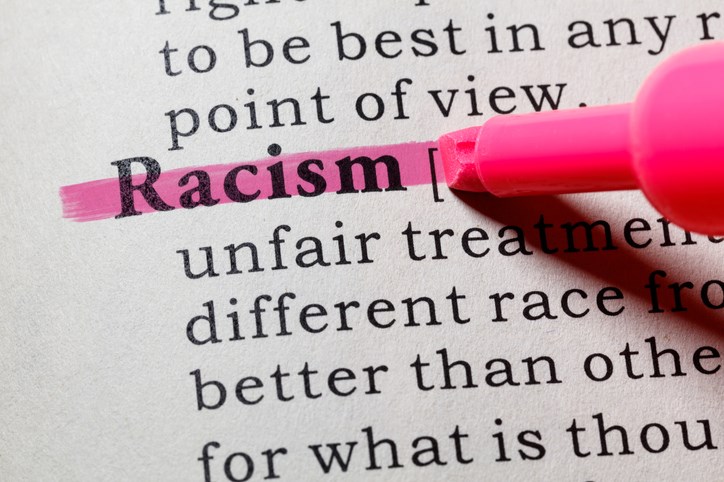Editor:
I was unfortunately a victim of social injustice when I moved to Burnaby from Hong Kong to attend Grade 2 in the 1990s.
With a lack of anti-racism resources, my homeroom teacher was not equipped to deal with the episodes of bullying I faced at school. After more than two decades, I am now a graduate student in Simon Fraser University’s School of Communication. The racialized population in Canada has grown exponentially, but systemic racism is still evident.
Just this month, SFU professor June Francis and BC Housing executive Stephanie Allen asked Air Canada to review its corporate culture.
Both black Canadians were (allegedly) discriminated against by Air Canada’s policies. When Francis was flying from Vancouver to Toronto, an airline agent refused her request to priority board due to a knee surgery, humiliating her in the process. Similarly, Allen was requested by an agent to check her bags without an announcement asking for volunteers to check carry-on baggage. Both instances targeted women of colour, who later decided to speak out about the discrimination.
Canada prides herself as a multicultural country that welcomes people of different colour, gender and background. And yet, racism is encountered not just on an individual level, but also within various corporate and government systems. The Canadian Multiculturalism Act is implemented by the government to safeguard the cultural diversity in Canada. If the act recognizes Canada’s multicultural tradition and aims to protect this heritage, then why have Francis, Allen and I been treated otherwise?
Oftentimes, systemic racism is constructed into structures and procedures. Throughout Canadian history, there has been countless instances of systemic racism in which people of colour were treated with injustice.
In the early 1880s, Chinese workers were hired in large groups to construct the Canadian Pacific Railway, but were not acknowledged. They were paid measly, less than their Caucasian counterparts, to conduct life-threatening tasks like handling explosives.
In 1885, the head tax was levied to discourage Chinese people from coming to Canada. The tax quickly increased from $50 to $500, leaving many family members left behind in China unable to reunite.
In 1914’s Komagata Maru incident, many Indians on the steamship were denied entry and forced to return to India. In 1942, under the name of “national security,” over 90% of the total Japanese Canadian population in B.C. were forced into internment camps.
Moreover, aboriginal children were forced out of their homes and away from their families to attend residential schools as a step of ethnic cleansing. There have been numerous historical episodes of white supremacy, in which exclusion laws especially targeted people of colour.
What can we do about it? The answer could be through education and policies. Arguably, today we have several legislative measures, the Internet, and much more training and education to prevent systemic racism. Established in 1977 through the Canadian Human Rights Act, the Canadian Human Rights Tribunal holds hearings to investigate complaints of discriminatory practices.
Also, it is expected that corporations would defend their brand image and goodwill through apologies and compensation. For example, BC Housing executive Allen received an apology letter and a $200 travel voucher from Air Canada.
Yet, the path to social justice is not accessible to all. The tribunal does not receive complaints directly. The Canadian Human Rights Commission goes through the cases and refers relevant ones to be heard by the tribunal. The Federal Court of Canada then review all the tribunal’s decisions.
The process is a daunting and long trial that requires time, patience, and perseverance. When the complaint reaches the tribunal for hearing, the plaintiffs will also need to prove that they were discriminated against on the basis of race. The people on the tribunal might not have even experienced racism.
Systemic racism continues today. When job-hunting, many employers prefer to hire an “appropriate” candidate with Anglo-sounding names or that they perceive can fit into the existing workplace. This increases the difficulty of coloured job-seekers to enter mainstream corporations.
Moreover, the 2016 Miscellaneous Statutes Amendment Act applies a 20% foreign-buyers tax only to non-Canadian citizen or permanent resident property purchaser. Furthermore, passengers from the Middle East are more likely to have their luggage searched or face additional questioning by Canada Border Services agents. Our Immigration Act caters to bringing in members of the upper middle class or elites of developed countries, and temporary foreign workers. These individuals are expected to strengthen our economy or do our dirty labour. Systemic racism still exists.
Race has permeated our justice system. However, talks on racism are rare in Canada because we position ourselves as being different from the United States. If we continue to turn a blind eye to racism ingrained in our systems and structure, we are contributing to the collapse of Canada’s multicultural values. People were not born with the choice of race and gender, and should not be treated differently on those basics.
The incidents that Francis, Allen and I faced are not independent cases. They are part of a wider discussion of social injustice, racial discrimination, and inequality of the Canadian society. We can eliminate systemic racism through education and media diversity.
Diversity education can be incorporated into K-12, the public sector, and performance evaluation of public service employees. Teacher education would include anti-racism training. In terms of media diversity, ethnic media outlets can have a larger representation and increased funding. Journalism school training would consist of diversity training. Be it systemic racism or not, it is in virtue of our common human nature to be kind to others, to treat them the way we would want to be treated.
Stephen Li, Burnaby



